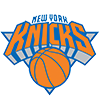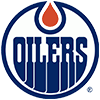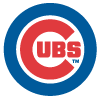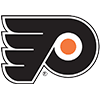Every few years I like to refresh what I like to call, "Park Factors, a Necessary Evil." With the expected impending slew of transactions (fingers crossed), this seems like a great time to review the topic.
Let's start with the evil part. Park factors are not perfect. They don't flesh out all bias. Not all players are affected the same. However, we're still better off using them, hence the necessary aspect.
While there is some intriguing work being done to generate park factors using next level data, most are calculated the old-fashioned way. Here is an example, using home runs.
100 x ((Home Hit HR + Home Pitch HR allowed)/(Home Total Batters AB+ Home Total Pitchers AB))/((Away Hit HR + Away Pitch HR allowed)/(Away Total Batters AB+ Away Total Pitchers AB))
Depending on the metric, games can replace at-bats. A neutral venue is indicated by a factor of 100. Anything over 100 means the venue produces more of the stat than a neutral setting, with a number below 100 showing the venue suppresses the stat. A park with a 105 home run factor is good for hitters, but bad for pitchers. On the other hand, a 105 for strikeouts is bad for hitters and good for pitchers.
The assumption is the quality of the hitters and pitchers on the team that calls the park home is the dominant factor, and the quality of opponents (and the aggregate factors of their parks) is neutral. This is an extreme example, but let's
Every few years I like to refresh what I like to call, "Park Factors, a Necessary Evil." With the expected impending slew of transactions (fingers crossed), this seems like a great time to review the topic.
Let's start with the evil part. Park factors are not perfect. They don't flesh out all bias. Not all players are affected the same. However, we're still better off using them, hence the necessary aspect.
While there is some intriguing work being done to generate park factors using next level data, most are calculated the old-fashioned way. Here is an example, using home runs.
100 x ((Home Hit HR + Home Pitch HR allowed)/(Home Total Batters AB+ Home Total Pitchers AB))/((Away Hit HR + Away Pitch HR allowed)/(Away Total Batters AB+ Away Total Pitchers AB))
Depending on the metric, games can replace at-bats. A neutral venue is indicated by a factor of 100. Anything over 100 means the venue produces more of the stat than a neutral setting, with a number below 100 showing the venue suppresses the stat. A park with a 105 home run factor is good for hitters, but bad for pitchers. On the other hand, a 105 for strikeouts is bad for hitters and good for pitchers.
The assumption is the quality of the hitters and pitchers on the team that calls the park home is the dominant factor, and the quality of opponents (and the aggregate factors of their parks) is neutral. This is an extreme example, but let's say the Red Sox lineup had a bunch of left-handed batters adept at pulling the ball down the line. With the quirky dimensions, Boston would clink a lot more balls off the Pesky Pole than the visiting teams, and since parks outside of Fenway Park are deeper down the line, the formula would deem Fenway Park favorable for lefty swingers. As will soon be shown, the deepest right field in MLB actually dampens left-handed power. Again, this is hyperbole, but there may be certain characteristics of a team's lineup or rotation that could skew the indices.
To help account for this, and variance in general, park factors are most often presented as a three-year average. In the instances where a venue is renovated, only the seasons with the new dimensions are included, rendering those factors even more suspect than usual.
Something to keep in mind when using park factors is they are most effective in a larger sample, such as a season-long projection to fuel draft rankings. This is not to say they should be ignored when setting lineups in daily leagues, DFS or betting. However, there are more relevant considerations in a one-game sample.
With that in mind, something I do for projection purposes is to calculate what I call composite park factors. This is really only apropos when looking at the entire season. Instead of assuming the opponent's venues are neutral in the aggregate, I calculate the park factor as a weighted average based on the team's schedule. Once the season begins and the team plays road games, the aggregate factor changes (but that's what Excel is for).
The reality is the aggregate of most away venues is neutral, or close to it. Even so, there are some differences, so I take the time to get the composite factors, which will soon be presented.
Earlier, a strikeout factor was mentioned. Whenever I discuss this subject, I'm asked to explain how strikeouts and walks can be different among the various parks. There are a few factors, including foul territory, the batter's eye and atmospheric conditions affecting pitch movement.
A common misperception is a homer-friendly park is a run-friendly park and a venue suppressing homers is good for pitchers. While this is sometimes true, it often is not.
There are several reasons a park can be favorable for home runs. Sometimes it's the dimensions. Other times it is altitude. Temperature, humidity and wind also play a part.
Smaller venues have less area to cover, reducing the number of hits. As such, parks boosting homers are thought to boost runs, but they may not.
Larger parks have a lot more acreage. Outfielders need to play deeper, so some weakly hit fly balls fall in. Bigger parks also yield more extra-base hits. It may be harder to clear the fence in some of these yards, but there are more hits, extending innings.
Some larger parks are also favorable for home runs, with Coors Field being the best example. The reason Coors Field is such a great hitting venue (and poor pitcher's park) is hits and homers are embellished, hits more so.
Some parks are advantageous for hitters from one side of the plate, but detrimental from the other side. Camden Yards is a prime example. After the left field fences were pushed back prior to the 2022 season, the venue has squashed righty power, but remains beneficial for lefties. As such, it's best to look at hitter's factors determined by handedness. Pitching factors aren't parsed in that nature.
With that as a backdrop, what follows are the park factors I am using for 2024 projections. Keep in mind they are composite factors, so if they appear different than you may find elsewhere, those are likely specific to the venue. Sources may also compute their three-year average in a different manner.
Each table is sortable, and color coded. This key is applied to pitchers and hitters:
- DARK BLUE: Best
- LIGHT BLUE: Good
- WHITE: Neutral
- YELLOW: Bad
- ORANGE: Terrible
Park Factors for Pitchers
| Team (Venue) | Runs | Hits | Home Runs | Strikeouts | Walks | |
|---|---|---|---|---|---|---|
| 1 | Angels (Angels Stadium) | 101 | 99 | 108 | 103 | 101 |
| 2 | Astros (Minute Maid Park) | 98 | 99 | 100 | 102 | 101 |
| 3 | Athletics (Oakland Coliseum) | 96 | 97 | 91 | 101 | 100 |
| 4 | Blue Jays (Rogers Centre) | 100 | 99 | 104 | 100 | 100 |
| 5 | Atlanta (Truist Park) | 102 | 100 | 101 | 104 | 99 |
| 6 | Brewers (American Family Field) | 101 | 99 | 106 | 104 | 104 |
| 7 | Cardinals (Busch Stadium) | 98 | 100 | 96 | 98 | 96 |
| 8 | Cubs (Wrigley Field) | 101 | 101 | 103 | 100 | 99 |
| 9 | Diamondbacks (Chase Field) | 100 | 102 | 89 | 99 | 97 |
| 10 | Dodgers (Dodgers Stadium) | 99 | 100 | 112 | 102 | 96 |
| 11 | Giants (Oracle Park) | 97 | 100 | 91 | 99 | 98 |
| 12 | Guardians (Progressive Field) | 97 | 99 | 97 | 101 | 103 |
| 13 | Mariners (T-Mobile Park) | 94 | 95 | 100 | 104 | 98 |
| 14 | Marlins (LoanDepot Park) | 100 | 101 | 97 | 100 | 99 |
| 15 | Mets (Citi Field) | 94 | 97 | 97 | 103 | 105 |
| 16 | Nationals (Nationals Park) | 100 | 99 | 102 | 98 | 98 |
| 17 | Orioles (Camden Yards) | 97 | 100 | 95 | 98 | 98 |
| 18 | Padres (Petco Park) | 95 | 98 | 98 | 102 | 99 |
| 19 | Phillies (Citizens Bank Park) | 100 | 99 | 105 | 102 | 100 |
| 20 | Pirates (PNC Park) | 102 | 101 | 92 | 96 | 101 |
| 21 | Rangers (Globe Life Field) | 102 | 100 | 109 | 99 | 101 |
| 22 | Rays (Tropicana Field) | 95 | 97 | 98 | 104 | 101 |
| 23 | Red Sox (Fenway Park) | 107 | 105 | 102 | 97 | 101 |
| 24 | Reds (Great American Ballpark) | 107 | 102 | 118 | 101 | 102 |
| 25 | Rockies (Coors Field) | 117 | 107 | 108 | 93 | 97 |
| 26 | Royals (Kauffman Stadium) | 105 | 104 | 93 | 94 | 101 |
| 27 | Tigers (Comerica Park) | 100 | 100 | 92 | 97 | 104 |
| 28 | Twins (Target Field) | 99 | 100 | 98 | 100 | 103 |
| 29 | White Sox (Guaranteed Rate Field) | 102 | 99 | 109 | 99 | 103 |
| 30 | Yankees (Yankee Stadium) | 100 | 99 | 108 | 101 | 101 |
Park Factors for Left Handed Batters
| Team (Venue) | Runs | Hits | Home Run | Strikeouts | Walks | |
|---|---|---|---|---|---|---|
| 1 | Diamondbacks (Chase Field) | 100 | 102 | 91 | 98 | 98 |
| 2 | Atlanta (Truist Park) | 102 | 101 | 101 | 105 | 97 |
| 3 | Orioles (Camden Yards) | 97 | 100 | 104 | 99 | 95 |
| 4 | Red Sox (Fenway Park) | 107 | 106 | 97 | 93 | 102 |
| 5 | Cubs (Wrigley Field) | 101 | 103 | 104 | 100 | 98 |
| 6 | White Sox (Guaranteed Rate Field) | 102 | 99 | 115 | 102 | 104 |
| 7 | Reds (Great American Ballpark) | 106 | 101 | 122 | 100 | 98 |
| 8 | Guardians (Progressive Field) | 104 | 101 | 108 | 103 | 102 |
| 9 | Rockies (Coors Field) | 117 | 105 | 101 | 94 | 94 |
| 10 | Tigers (Comerica Park) | 100 | 98 | 87 | 99 | 107 |
| 11 | Astros (Minute Maid Park) | 98 | 100 | 98 | 102 | 96 |
| 12 | Royals (Kauffman Stadium) | 105 | 101 | 91 | 94 | 105 |
| 13 | Angels (Angels Stadium) | 101 | 98 | 109 | 103 | 99 |
| 14 | Dodgers (Dodgers Stadium) | 99 | 99 | 109 | 100 | 94 |
| 15 | Marlins (LoanDepot Park) | 101 | 101 | 102 | 100 | 100 |
| 16 | Brewers (American Family Field) | 101 | 98 | 112 | 104 | 106 |
| 17 | Twins (Target Field) | 99 | 100 | 106 | 102 | 107 |
| 18 | Mets (Citi Field) | 94 | 98 | 101 | 105 | 108 |
| 19 | Yankees (Yankee Stadium) | 99 | 97 | 115 | 102 | 105 |
| 20 | Athletics (Oakland Coliseum) | 95 | 97 | 95 | 100 | 99 |
| 21 | Phillies (Citizens Bank Park) | 100 | 99 | 105 | 102 | 102 |
| 22 | Pirates (PNC Park) | 102 | 102 | 97 | 94 | 102 |
| 23 | Padres (Petco Park) | 95 | 99 | 99 | 102 | 98 |
| 24 | Mariners (T-Mobile Park) | 97 | 98 | 93 | 100 | 99 |
| 25 | Giants (Oracle Park) | 97 | 100 | 91 | 99 | 97 |
| 26 | Cardinals (Busch Stadium) | 98 | 99 | 96 | 98 | 92 |
| 27 | Rays (Tropicana Field) | 95 | 96 | 97 | 106 | 99 |
| 28 | Rangers (Globe Life Field) | 102 | 101 | 115 | 99 | 101 |
| 29 | Blue Jays (Rogers Centre) | 101 | 99 | 98 | 101 | 105 |
| 30 | Nationals (Nationals Park) | 100 | 101 | 101 | 96 | 98 |
Park Factors for Right Handed Batters
| Team (Venue) | Runs | Hits | Home Run | Strikeouts | Walks | |
|---|---|---|---|---|---|---|
| 1 | Diamondbacks (Chase Field) | 100 | 102 | 88 | 101 | 96 |
| 2 | Atlanta (Truist Park) | 102 | 99 | 100 | 103 | 101 |
| 3 | Orioles (Camden Yards) | 97 | 100 | 88 | 97 | 101 |
| 4 | Red Sox (Fenway Park) | 107 | 103 | 104 | 99 | 99 |
| 5 | Cubs (Wrigley Field) | 101 | 100 | 102 | 100 | 99 |
| 6 | White Sox (Guaranteed Rate Field) | 102 | 99 | 107 | 97 | 102 |
| 7 | Reds (Great American Ballpark) | 106 | 102 | 114 | 100 | 104 |
| 8 | Guardians (Progressive Field) | 104 | 100 | 95 | 100 | 104 |
| 9 | Rockies (Coors Field) | 117 | 108 | 113 | 93 | 100 |
| 10 | Tigers (Comerica Park) | 100 | 100 | 95 | 96 | 101 |
| 11 | Astros (Minute Maid Park) | 98 | 98 | 102 | 102 | 103 |
| 12 | Royals (Kauffman Stadium) | 105 | 104 | 95 | 93 | 97 |
| 13 | Angels (Angels Stadium) | 101 | 99 | 107 | 102 | 102 |
| 14 | Dodgers (Dodgers Stadium) | 99 | 100 | 114 | 103 | 98 |
| 15 | Marlins (LoanDepot Park) | 101 | 100 | 94 | 100 | 99 |
| 16 | Brewers (American Family Field) | 101 | 100 | 103 | 104 | 103 |
| 17 | Twins (Target Field) | 99 | 100 | 95 | 99 | 100 |
| 18 | Mets (Citi Field) | 94 | 96 | 94 | 102 | 102 |
| 19 | Yankees (Yankee Stadium) | 99 | 99 | 104 | 101 | 100 |
| 20 | Athletics (Oakland Coliseum) | 95 | 97 | 88 | 100 | 101 |
| 21 | Phillies (Citizens Bank Park) | 100 | 99 | 105 | 101 | 98 |
| 22 | Pirates (PNC Park) | 102 | 101 | 90 | 98 | 100 |
| 23 | Padres (Petco Park) | 95 | 98 | 99 | 103 | 101 |
| 24 | Mariners (T-Mobile Park) | 97 | 100 | 93 | 103 | 100 |
| 25 | Giants (Oracle Park) | 97 | 101 | 93 | 99 | 99 |
| 26 | Cardinals (Busch Stadium) | 98 | 99 | 96 | 97 | 99 |
| 27 | Rays (Tropicana Field) | 95 | 97 | 100 | 103 | 103 |
| 28 | Rangers (Globe Life Field) | 102 | 99 | 106 | 100 | 100 |
| 29 | Blue Jays (Rogers Centre) | 101 | 99 | 106 | 100 | 98 |
| 30 | Nationals (Nationals Park) | 100 | 98 | 102 | 100 | 98 |
Park Factors for Switch Hitters
| Team (Venue) | Runs | Hits | Home Run | Strikeouts | Walks | |
|---|---|---|---|---|---|---|
| 1 | Diamondbacks (Chase Field) | 100 | 102 | 90 | 99 | 98 |
| 2 | Atlanta (Truist Park) | 102 | 101 | 101 | 105 | 98 |
| 3 | Orioles (Camden Yards) | 97 | 100 | 100 | 98 | 97 |
| 4 | Red Sox (Fenway Park) | 107 | 105 | 99 | 95 | 101 |
| 5 | Cubs (Wrigley Field) | 101 | 102 | 104 | 100 | 99 |
| 6 | White Sox (Guaranteed Rate Field) | 102 | 99 | 113 | 101 | 103 |
| 7 | Reds (Great American Ballpark) | 106 | 102 | 119 | 100 | 101 |
| 8 | Guardians (Progressive Field) | 104 | 99 | 99 | 101 | 103 |
| 9 | Rockies (Coors Field) | 117 | 106 | 105 | 94 | 96 |
| 10 | Tigers (Comerica Park) | 100 | 99 | 89 | 98 | 106 |
| 11 | Astros (Minute Maid Park) | 98 | 99 | 99 | 102 | 98 |
| 12 | Royals (Kauffman Stadium) | 105 | 102 | 92 | 94 | 103 |
| 13 | Angels (Angels Stadium) | 101 | 98 | 109 | 102 | 100 |
| 14 | Dodgers (Dodgers Stadium) | 99 | 100 | 111 | 101 | 95 |
| 15 | Marlins (LoanDepot Park) | 101 | 101 | 99 | 100 | 99 |
| 16 | Brewers (American Family Field) | 101 | 99 | 109 | 104 | 105 |
| 17 | Twins (Target Field) | 99 | 100 | 103 | 101 | 105 |
| 18 | Mets (Citi Field) | 94 | 98 | 99 | 104 | 107 |
| 19 | Yankees (Yankee Stadium) | 99 | 97 | 112 | 101 | 103 |
| 20 | Athletics (Oakland Coliseum) | 95 | 97 | 93 | 100 | 100 |
| 21 | Phillies (Citizens Bank Park) | 100 | 99 | 105 | 102 | 101 |
| 22 | Pirates (PNC Park) | 102 | 102 | 95 | 95 | 102 |
| 23 | Padres (Petco Park) | 95 | 98 | 99 | 102 | 98 |
| 24 | Mariners (T-Mobile Park) | 97 | 99 | 93 | 101 | 99 |
| 25 | Giants (Oracle Park) | 97 | 100 | 91 | 99 | 97 |
| 26 | Cardinals (Busch Stadium) | 98 | 99 | 96 | 98 | 94 |
| 27 | Rays (Tropicana Field) | 95 | 97 | 98 | 105 | 100 |
| 28 | Rangers (Globe Life Field) | 102 | 101 | 113 | 99 | 101 |
| 29 | Blue Jays (Rogers Centre) | 101 | 99 | 101 | 101 | 103 |
| 30 | Nationals (Nationals Park) | 100 | 100 | 102 | 97 | 98 |
OBSERVATIONS
- Coors Field and the Great American Ball Park are bad for pitchers, in both runs and homers.
- Kauffman Stadium and PNC Park are presumed pitcher's parks because they suppress power, but they actually embellish offense.
- Chase Field squashes power, but plays neutral for runs.
- Angels Stadium and Dodgers Stadium allow more homers than you might think.
- Yankee Stadium, American Family Field, Citizens Bank Park, Rogers Centre and Wrigley Field have the reputation of being hitter-friendly, but they play neutral.
- Petco Park, Tropicana Field, Progressive Field, Citi Field, Busch Stadium, Camden Yards, Oakland Coliseum and Oracle Park all hamper hits and homers.
- LoanDepot Park is assumed to hurt homers and runs, but it barely hinders homers and is neutral for runs.
- Fenway Park helps righty power but hurts lefty power.
- Camden Yards, Progressive Field and Target Field embellish left-handed power but hinder right-handed power.
- Coors Field helps right-handed power a lot more than left-handed power.
- PNC Park hurts right-handed power more than left-handed.


































